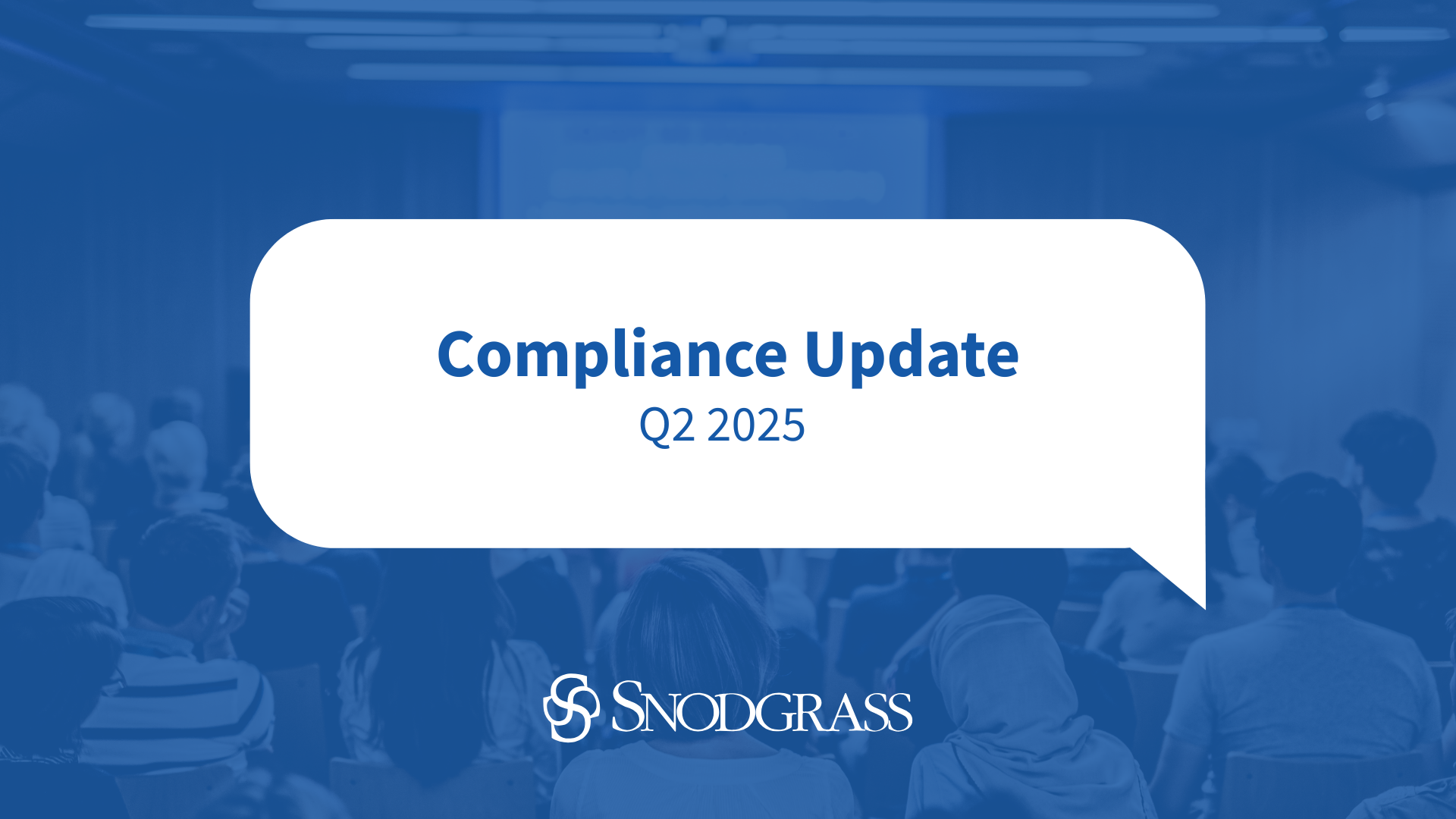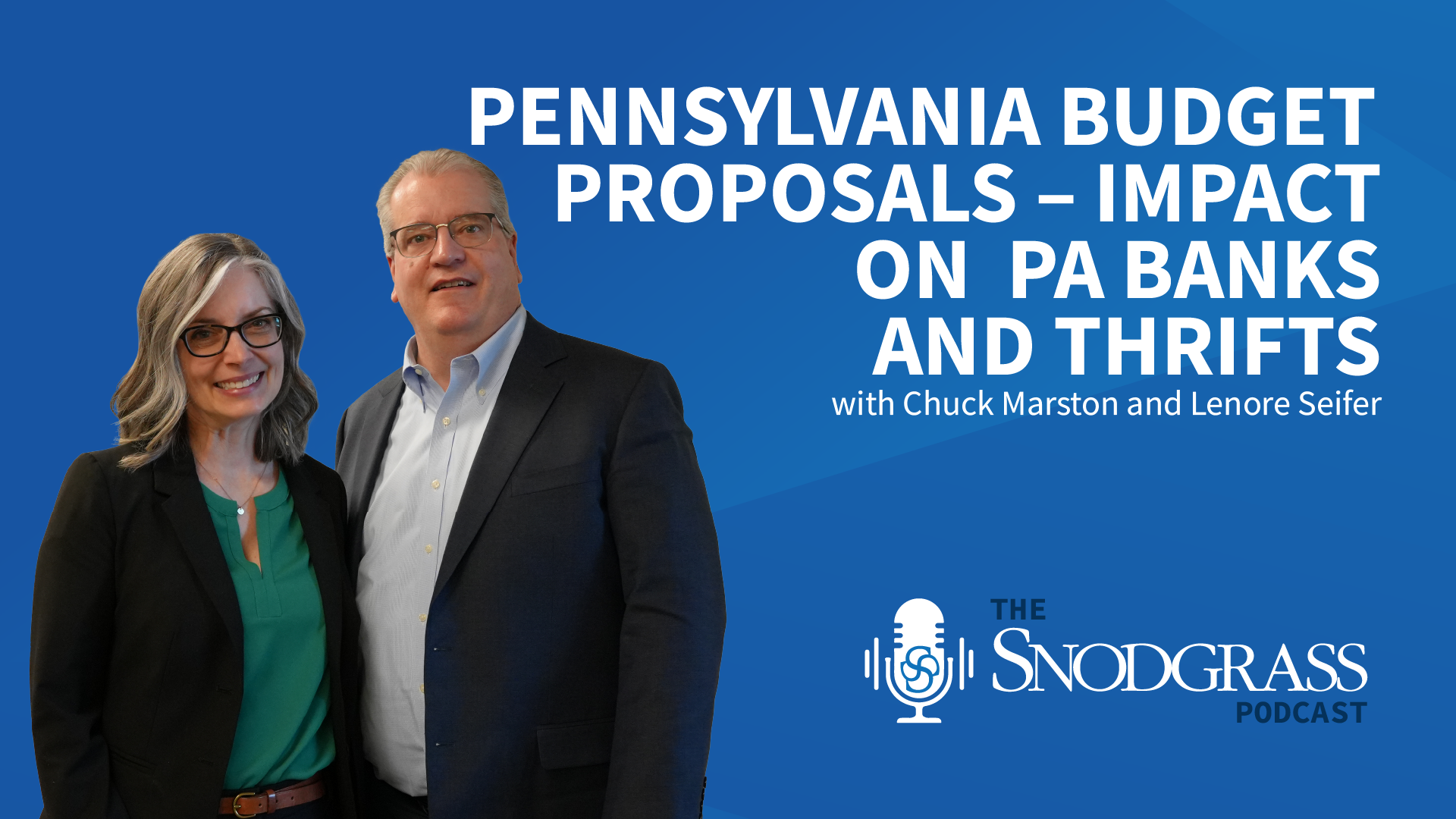By Charles E. Marston, CPA, MST, President and Principal, Tax Group, S.R. Snodgrass, P.C.
When it comes to the world of banking, we all know change is more often the rule than the exception. The same can be said for tax regulations and changes that affect banks. To take full advantage of new (and existing) opportunities to reduce tax liability wherever possible, today’s community banks must be acutely aware of tax changes and ready to adapt—quickly and efficiently. This article provides some insights into several tax-saving opportunities—some new and some existing—that are often overlooked
Timing differences in a rising interest rate/increased margin pressure environment.
The benefits of timing differences for tax purposes have typically been minimized by financial institutions, especially when interest rates were at, or near, zero percent. With no direct benefit on the effective tax rate for reporting purposes and the time value of money being what it is in a low interest rate environment, institutions have historically found it difficult to justify tax strategies that resulted only in deferring taxes, not eliminating them. Times have now changed, and with interest rates rising, these strategies deserve another look. Areas that can often benefit from a timing perspective include loan fees/costs, mortgage servicing rights, depreciation, and loan charge-offs. Examining the different methods available for tax and/or the analysis going into arriving at these deductions can often result in accelerating deductions or deferring income for tax purposes. The result can be significant tax savings, even when only temporary.
Tax-free income earned via tax-free investments and loans.
Another result of rising interest rates with tax planning impact is tax-free income earned via tax-free investments and loans, and the required interest expense add-back penalty banks face, often referred to as the “Section 291 disallowance” or “TEFRA disallowance.” Banks have always been required to disallow a portion of their total interest expense deduction for tax purposes based on a specific formula based on their total tax-free interest assets, total assets, and total interest expense. The mechanics of this formula create a situation where the disallowance can be significantly increased when total interest expense increases, even when there has been no change in the level of tax-free investments/loans. Because of this, a closer examination of what is being recorded as interest expense and classified as tax-free investments can be worth the additional work if it might result in a lower interest expense add-back. In addition, since the use of this specific formula is required only for banking institutions, there is an ability, using subsidiaries and holding companies, to avoid the disallowed deduction all together.
Evaluating taxable vs. tax-free investments and pricing of tax-free loans.
Another result of an increased interest expense disallowance is its impact on evaluating taxable vs. tax-free investments and correctly pricing tax-free loans. While many use the simple calculation for tax equivalent yield comparisons of [tax free rate / (1 – tax rate)], this calculation does not consider the Tax Equity and Fiscal Responsibility Act of 1982 (TEFRA) interest expense add-back. During periods of low total interest expense, this may not be significant; however, the current environment can increase the impact of leaving this add-back out and lead to improper investment decisions. If not already doing so, institutions should be careful to incorporate the impact of the interest expense disallowance in its tax equivalent yield calculations.
The 2022 Inflation Reduction Act provided significant changes to many energy income tax credits.
The use of tax credits, such as low-income housing credits and rehabilitation credits, has been a long-used tax savings strategy that many institutions have employed to not only reduce tax liability but also decrease reported effective tax rates. Changes resulting from the 2022 Inflation Reduction Act may make sense for certain institutions, and it is worth investigating these opportunities. The Act provided more favorable rules, allowing the direct purchase of some credits, and increasing the carryback period for unused credits to three years from one year. Recent changes in the Generally Accepted Accounting Principles (GAAP) rules related to the accounting treatment of certain relationships involving the use of tax credits have, in some cases, provided more favorable treatment on annual financial statements as well.
Re-evaluating the return to 50 percent deduction for business meals as of 2023.
After a brief period of allowing 100 percent deduction, as of 2023, the deduction for business meals has returned to a 50 percent. This means businesses need to again separate their business meal expenses so the 50 percent limitation can be properly applied on tax returns. One mistake often made is how the cost of meals provided for employee events, such as holiday parties and team building events, is treated. Current tax law allows a 100 percent deduction in cases where meals are provided to events such as these for employees. Typically, these costs are lumped in with other limited meal expenses. Properly identifying these costs allows the taxpayer to benefit from a 100 percent deduction.
Know your state’s rules regarding “market based” or “benefit based” income sourcing.
A major tax risk that many institutions have, whether known, or in many cases, unknown, is related to state tax exposure. Each state has its own rules related to how income may be sourced, and many states have recently revised their rules to provide for a form of “market based” or “benefit based” sourcing as opposed to the older “cost of performance” method. As a result, these changes have increased the possibility that a bank may be subject to tax in states that they may have never considered. The flip side of this is that taxes may also be currently overpaid to the institution’s home state. Another significant related issue here is the increased use of remote employees by banks. Often, having remote employees in a different state can have an impact on an institution’s state tax exposure. Today, more than ever, it is extremely important that institutions analyze their potential state tax exposure so that they are aware of what risks they may have.



